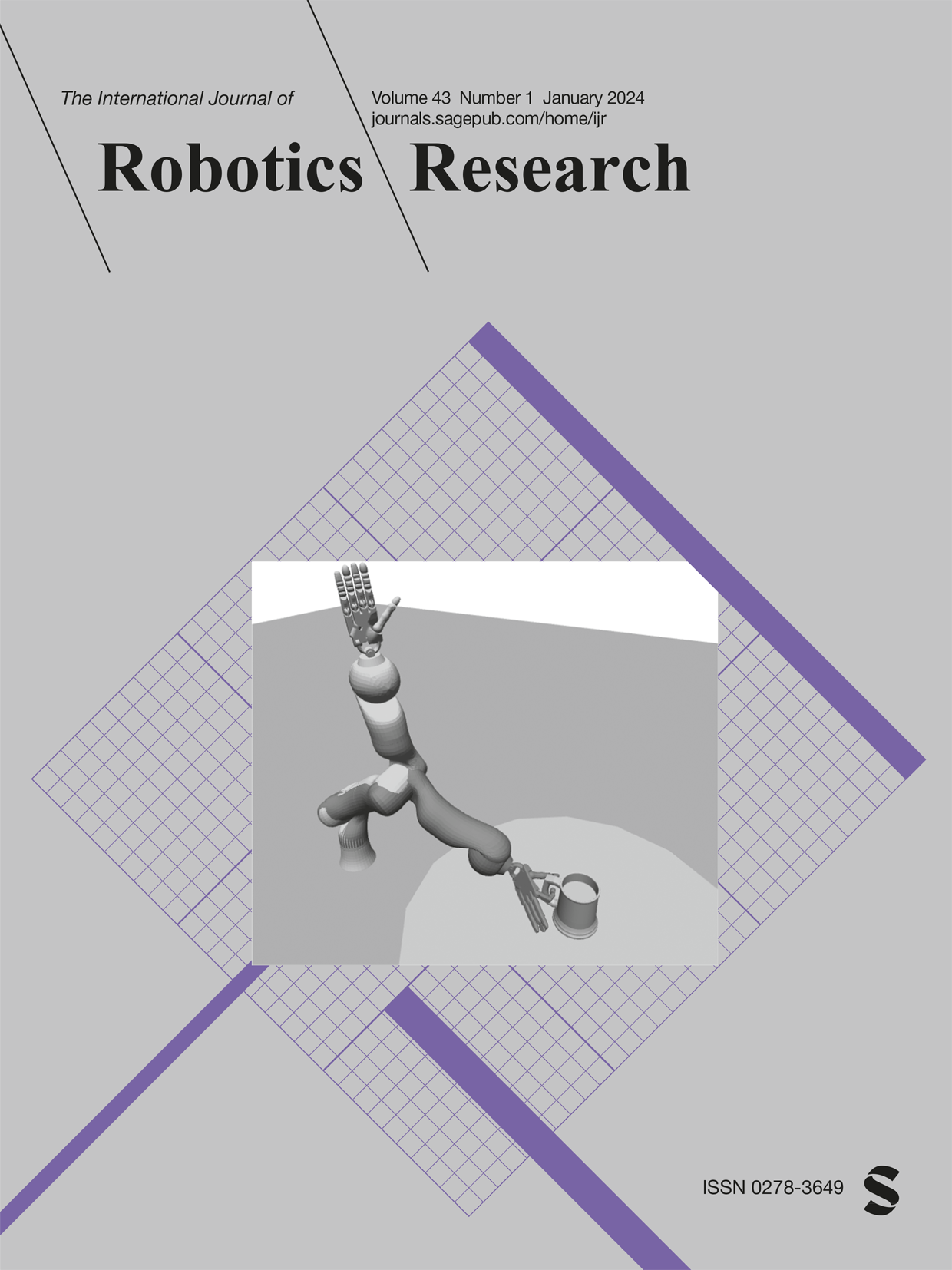未知环境下共享遥操作实时交互式虚拟夹具的生成方法
IF 5
1区 计算机科学
Q1 ROBOTICS
引用次数: 7
摘要
虚拟夹具(VF)是一种内置在软件中的约束,它通过增强的引导力帮助操作员沿着首选路径移动远程工具,以提高远程操作性能。然而,远程操作通常适用于未知或动态环境,这对VF的使用具有挑战性。大多数研究人员都认为VFs是预先定义的或自动生成的;然而,这些过程在对远程操作有很高要求的未知环境中是复杂和不可靠的。最近,一些研究人员通过引入在未知环境中生成vf的用户交互方法来解决这个问题。然而,这些方法仅限于为单个机器人工具生成单一类型的原语。此外,这些方法生成的VF的准确性取决于人工输入的准确性。因此,这些方法的应用是有限的。为了克服这些限制,本工作引入了一种新的交互式VF生成方法,其中包括一种将VF表示为组件组合的新方法。基于特征的用户界面允许操作员直观地指定VF组件。新的VF表示适应各种机器人工具和动作。采用基于特征的界面,使VF生成过程更加直观、准确。在本研究中,我们以人体为实验对象,进行了三种远程操作实验:钉孔、管材锯切和管材焊接。实验结果表明,该方法生成的VFs具有较高的操作质量,并且在所有实验中显示出最低的总工作量。在机器人刀具的失效比例和受力方面,钉孔任务遥操作是最安全的。在管材锯切任务中,机器人刀具的定位是最准确的。在管焊作业中,从测量的刀具轨迹光洁度和焊缝视觉观察两方面来看,焊缝质量最好。本文章由计算机程序翻译,如有差异,请以英文原文为准。
Method for generating real-time interactive virtual fixture for shared teleoperation in unknown environments
A virtual fixture (VF) is a constraint built into software that assists a human operator in moving a remote tool along a preferred path via an augmented guidance force to improve teleoperation performance. However, teleoperation generally applies to unknown or dynamic environments, which are challenging for VF use. Most researchers have assumed that VFs are pre-defined or generated automatically; however, these processes are complicated and unreliable in unknown environments where teleoperation is in high demand. Recently, a few researchers have addressed this issue by introducing a user-interactive method of generating VFs in unknown environments. However, these methods are limited to generating a single type of primitive for a single robot tool. Moreover, the accuracy of the VF generated by these methods depends on the accuracy of the human input. Thus, applications of these methods are limited. To overcome those limitations, this work introduces a novel interactive VF generation method that includes a new method of representing VFs as a composition of components. A feature-based user interface allows the human operator to intuitively specify the VF components. The new VF representation accommodates a variety of robot tools and actions. Using the feature-based interface, the process of VF generation is more intuitive and accurate. In this study, the proposed method is evaluated with human subjects in three teleoperation experiments: peg-in-hole, pipe-sawing, and pipe-welding. The experimental results show that the VFs generated by the proposed approach result in a higher manipulation quality while demonstrating the lowest total workload in all experiments. The peg-in-hole task teleoperation was the safest in terms of failure proportion and exerted force of the robot tool. In the pipe-sawing task, the positioning of the robot tool was the most accurate. In the pipe-welding task, the quality of weld was the best in terms of measured tool-trajectory smoothness and visual weld observation.
求助全文
通过发布文献求助,成功后即可免费获取论文全文。
去求助
来源期刊
CiteScore
22.20
自引率
0.00%
发文量
34
审稿时长
6-12 weeks
期刊介绍:
The International Journal of Robotics Research (IJRR) has been a leading peer-reviewed publication in the field for over two decades. It holds the distinction of being the first scholarly journal dedicated to robotics research.
IJRR presents cutting-edge and thought-provoking original research papers, articles, and reviews that delve into groundbreaking trends, technical advancements, and theoretical developments in robotics. Renowned scholars and practitioners contribute to its content, offering their expertise and insights. This journal covers a wide range of topics, going beyond narrow technical advancements to encompass various aspects of robotics.
The primary aim of IJRR is to publish work that has lasting value for the scientific and technological advancement of the field. Only original, robust, and practical research that can serve as a foundation for further progress is considered for publication. The focus is on producing content that will remain valuable and relevant over time.
In summary, IJRR stands as a prestigious publication that drives innovation and knowledge in robotics research.

 求助内容:
求助内容: 应助结果提醒方式:
应助结果提醒方式:


